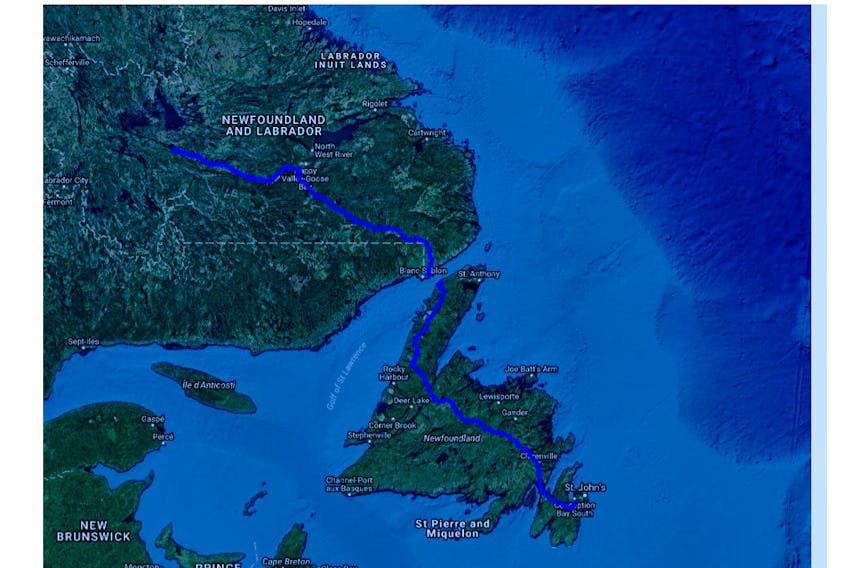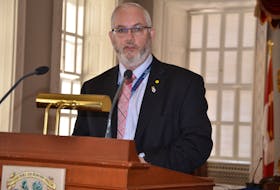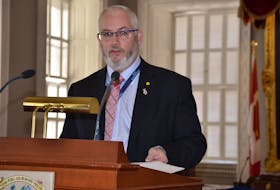You might think of this as a near-weekly update at this point.
And, if you read to the end, there’s a $340-million surprise!
Here’s a little primer on the issues: the Labrador Island Link, or LIL, is the power line that’s supposed to bring electricity to the Avalon Peninsula from Muskrat Falls. It’s years behind schedule, in part because a company called GE Grid Solutions has failed to deliver protection and control software needed to make the system work.

On Nov. 26, Nalcor told news outlets that, despite the challenges, it expected GE Grid to deliver software for the LIL by the end of December, so testing of the line could begin in January.
Problem is, by Nov. 29, Nalcor had already signed an agreement with GE Grid that said that deadline would be missed, an agreement signed following a period of negotiations.
Under the Eighth Amending Agreement with GE Grid, (so, the ninth version of the contract with the company for the same software), GE Grid is now expected to deliver the factory-tested software by Jan. 19, 2020 and, in the meantime, was to have supplied interim software to allow pre-commissioning of parts of the LIL to keep the project on its well-delayed schedule.
Another month’s delay may not sound like much, given the fact that the delivery of working software has been delayed for years.
But at this point, even Nalcor is expressing doubts to the Public Utilities Board.
This is from a partial reply from Newfoundland and Labrador Hydro to a request for information from the board: “Nalcor is monitoring progress daily and actively working with GE to resolve issues. Nalcor has observed that GE’s progress in November 2019 has been slower than planned, which could slip the Factory Acceptance Test (‘FAT’) complete milestone past the January 2020 date. Nalcor will continue to work with GE to mitigate slippage to the dynamic commissioning milestones; however, schedule risk to the Interim Software is high.”
And there may be consequences, according to Nalcor: “Liquidated damages and performance guarantees are associated with the agreed upon milestone dates.”
Keep in mind, as I reported weeks ago, independent consultants Liberty Consulting Group, hired by the PUB, are already warning that Muskrat Falls may not be able to supply power in time for next winter, let alone this one.
That risk rolls downhill to Newfoundland and Labrador Hydro, which is trying to figure out where it will get power if the schedule continues to slip: “Although the final date for full functionality of the software has not changed, the schedule risk to the interim software is high,” Hydro wrote to the PUB.
“This schedule update change is an important new factor to consider in Hydro’s decision regarding the planned standby period for the Holyrood Thermal Generating Station. … The revised LIL schedule will certainly influence whether the current planned period for standby service should be extended.”
Keep in mind, as I reported weeks ago, independent consultants Liberty Consulting Group, hired by the PUB, are already warning that Muskrat Falls may not be able to supply power in time for next winter, let alone this one. Liberty’s also said we may need extended backup, including the Holyrood plant.
Liberty’s been right every time so far — in their Nov. 13 report, they said, “Given so many failures to meet schedule dates for effective software delivery, we view the newly proposed dates as aggressive and therefore not supportive of optimism in meeting them.”
And, lo and behold, 16 days later, they were proven right. Again.
Oh, here’s the surprise I promised. What happens if Hydro has to keep the Holyrood generating station going as backup until, say, 2026? Not including the fuel costs, here’s Hydro’s rough estimate of the operating and maintenance costs: $45.6 million in 2020, $61.5 million in 2021, $55.3 million in 2022, $50.9 million in 2023, $41.9 million in 2024, $41.9 million in 2025 and $41.3 million in 2026.
Let’s round that up to a nice tidy $340 million. And guess who pays? Remember — that doesn’t include fuel.
Russell Wangersky’s column appears in SaltWire publications across Atlantic Canada. He can be reached at [email protected] — Twitter: @wangersky
MORE FROM RUSSELL WANGERSKY
• New passenger rights won’t come without baggage
• FISH-NL may change things, still









